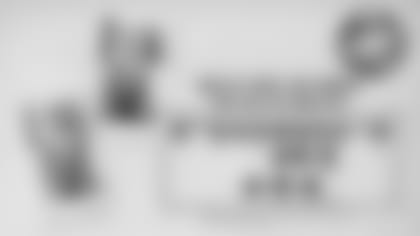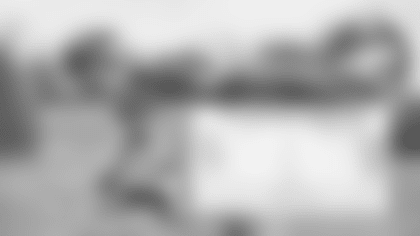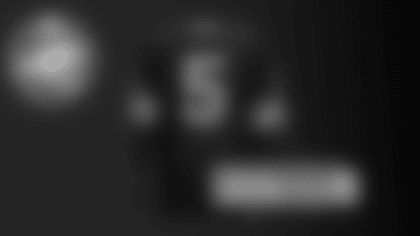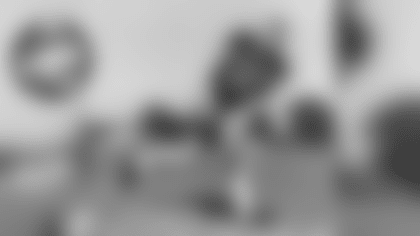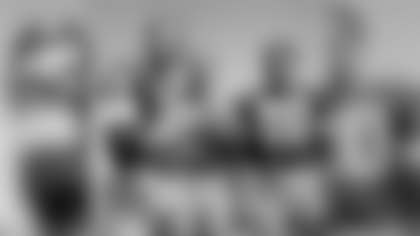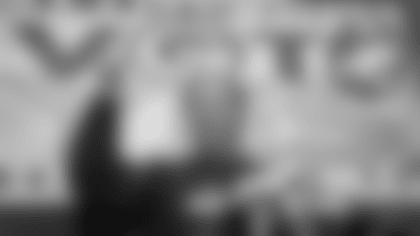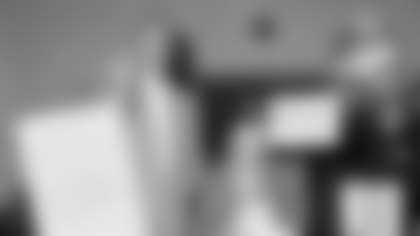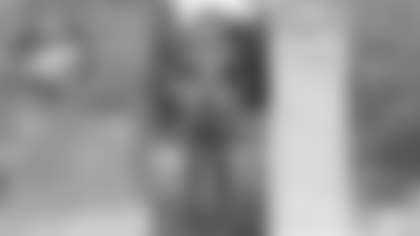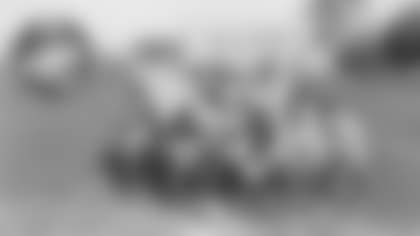By the late 1920s, there was talk about Knute Rockne's Notre Dame shift and Box formation becoming outdated. It first surfaced when his 1928 team finished 5-4, the worst record of Rockne's 12 Notre Dame teams. Although Rockne's last two went unbeaten and were mythical national champions, Pop Warner's double wing had emerged as the new craze in college football, and it wouldn't be long before the modern T-formation became the next rage.
"It so happened that Notre Dame in 1928 had its poorest record in many years and that contributed to the turning away from its shifting attack, and the Warner modus operandi becoming the new vogue," Allison Danzig, a sportswriter for 45 years who was regarded as an authority on college football, wrote in the 564-page book, "College Football U.S.A. 1869-1971: Official Book of the National Football Foundation."
"The demand for Notre Dame-trained coaches now began to dwindle and the shift was never to be as much in favor again, though Rockne was to turn out invincible national champions in 1929 and 1930 before he came to his tragic death in the crash of an airplane in early 1931."
Yet Curly Lambeau, who played for Rockne in 1918, would win a record six NFL championships as coach of the Green Bay Packers over a 16-year span from 1929-44. That accomplishment, running what many believed was already an anachronistic offense, would seem to suggest that maybe Lambeau has been vastly underrated as a football strategist.
Yes, some of his best players claimed they knew more about the game than he did. "To be frank, Curly really didn't know all that much about football," Pro Football Hall of Fame tackle Cal Hubbard told Ralph Hickok, Johnny Blood's biographer. "After all, he spent just that one year at Notre Dame – how much did he learn?"
Hubbard would know better than anyone today about Lambeau's merits as a coach, although it also should be noted that fellow Hall of Famers Blood and Mike Michalske were less critical of Lambeau in their interviews with Hickok. Plus, there is more to being a strategist than conceiving and diagramming plays.
There's certainly evidence, for example, that Lambeau continuously and successfully revamped his offense during his championship run, and that he also was more than amenable to adapting it to his personnel rather than insisting his players conform to his scheme.
Consider this:
Lambeau won three NFL titles with Red Dunn as his quarterback and primary passer and another two with Larry Craig, who never threw a pass in the eight years he played quarterback for the Packers. Lambeau also won three championships with Dunn calling signals and three others with Joe Laws, whose primary position was right halfback, as his most effective play-caller.
Beyond that, when Lambeau won his fifth title in 1939, he basically alternated Laws and Arnie Herber at right halfback. That year, Herber passed for 1,107 yards, caught one pass and finished with minus-11 yards rushing; whereas Laws threw only one pass, finished third on the team in receiving with 11 receptions and ran 55 times, the fourth-most carries on the team. Curiously, Herber, who finished third in the league in passing yards, didn't call plays; whereas Laws, whose only pass fell incomplete, did when he was on the field.
In essence, there were at least four stages of Lambeau's Notre Dame Box over his 29 seasons as Packers coach. Here's a look at the first phase when Lambeau himself and quarterback Charlie Mathys were the staples of the attack. It covers the years 1921-25, when the Packers compiled a 29-16-5 record but averaged only 9.7 points per game.
Just to be clear, one can only presume that the Packers ran the Notre Dame Box from the outset of their entry in 1921 into what was then the American Professional Football Association.
Green Bay native Joe Hoeffel was technically the coach that year, not Lambeau. Hoeffel had been captain of Wisconsin's unbeaten 1912 team under coach William Juneau, and also had served as an assistant coach at Nebraska under Ewald "Jumbo" Stiehm, a native of Johnson Creek, Wis., and still owner of the best winning percentage in Cornhuskers football history.
Again, no evidence could be uncovered either way, as to whether Hoeffel had a favored offense other than the Box and if he imposed it on Lambeau and his team. All one can go on is that years later, Lambeau said he installed the offense he learned from Rockne when he formed the Packers in 1919. Lambeau was the captain of the 1921 Packers, as he had been in 1919 and '20, their seasons of independent ball.
Either way, there's little to no detailed information available about the Packers' offense from 1921-25. No playbook. No old film. No specifics to be found in the Green Bay Press-Gazette or other newspapers.
Thus, it would seem as though the most instructive source for learning more about Lambeau's offense would be researching Rockne's.
Rockne took over as Notre Dame's coach in 1918, Lambeau's only season there, and ran the shift or Box from the start, the same offense that Jesse Harper, his predecessor, had used during the four seasons Rockne served as his assistant.
Rockne credited coaching legend Amos Alonzo Stagg with being the originator of it. Other coaches of that period traced the shift to Dr. Harry Williams, who coached at Minnesota from 1900-21. Regardless of its origins, the Box was one of less than a handful of offenses that were widely used in the early 1920s. The others being: Warner's single- and double-wing formations, and what was simply called "punt formation," the offense most closely associated to Fielding Yost, Michigan's coach from 1901-23.
Here were some of the key tenets of Rockne's offense in his early years at Notre Dame.
1) The huddle was just becoming a part of the game in the early 1920s, but Rockne rarely used it. Thus, Notre Dame's plays were called at the line of scrimmage. "In the Notre Dame shift, there are three men in the backfield in a T formation, with a quarterback in front of them," Harry Stuhldreher, quarterback of Notre Dame's famed 1924 "Four Horsemen," wrote in his 1931 book, "Knute Rockne: Man Builder." "The quarterback calls the signals for the play. In these signals, the quarterback gives the play and the direction in which the team is to shift."
2) Once the backs had shifted either left or right in unison and quick rhythm, they formed what resembled a Box formation to the side of the center where they shifted. On most Notre Dame plays, the ends lined up tight to the tackles and also shifted a yard outside them at the same time as the backs. That said, Rockne's teams also ran plays from the T without shifting, but only inside the opponent's 20-yard line, wrote Adam Walsh, the center of the "Seven Mules," the linemen for "The Four Horsemen," in 1968 in a letter reprinted in the book, "Oh, How They Played the Game: The Early Days of Football and the Heroes Who Made It Great."
3) Before college football started legislating against Rockne's shift in the mid-1920s, his four backs were so well drilled they could execute it with lightning speed and "be off after the briefest of pauses," said Joel Bussert, who worked in the NFL's personnel department for 40 years and is now the league's most authoritative historian. As a result, as late as 1921, Rockne's backs could build up momentum even before the snap and defenses had no time to react. Thus, over the next five years, Bussert said the rules were changed to require a "momentary pause," then an "absolute stop," and, finally, a stop "for a period of approximately one second."
4) As the quarterback, Stuhldreher not only called signals but was the "Four Horsemen's" primary passer. Then again, Rockne's quarterbacks before Stuhldreher rarely passed. Including Stuhldreher, they also rarely ran the ball from scrimmage, although he was the main punt returner. Instead on plays from scrimmage, Stuhldreher usually led interference for the runner, as did the other two backs who weren't in possession of the ball.
5) The two halfbacks and fullback shared the load as ball-carriers, but Rockne also placed a high priority on versatility. Those three backs were also called on to pass and catch passes; and one and maybe at least two, would serve as punters and dropkickers. On most plays, at least two backs would be in position to take snaps and not all runs started with a handoff, if not most, during that period.
6) At least some of Rockne's pupils used the terms tailback and wingback during their coaching careers. For example, Frank Thomas, who played quarterback for Rockne from 1920-22 and then coached at Alabama from 1931-46, used the term "wingback" while illustrating a play at a blackboard on a gettyimages video. But there's little or no evidence of Rockne or Lambeau using them. Those were Warner terms for his single- and double-wing formations. It's purely speculative, but perhaps Rockne and Lambeau didn't take kindly to Warner's occasional cheap cracks about the shift and avoided associations to his offense. "The main object of offensive football should be to gain ground rather to work up a rhythmic fancy movement such as is necessary for the success of a Russian toe dancer," Warner once scoffed. Neither Rockne nor Lambeau had designated a specific back as a blocking back at that point either.
7) The key back in his offense, Rockne often said, was the quarterback, at a time when coaches had limited or almost no input into play-calling. "A quarterback should have absolute control and command of the team on the field as regards calling of signals," Rockne said in 1923. In fact, Rockne, unlike most other coaches of his day, considered his captain to be subordinate to his quarterback. His captain made the call at the coin toss and decided whether to accept or decline penalties. "In other matters," said Rockne, "the quarterback is the absolute czar."
Backfield Starts
1921-25
(Years listed include only the 1921-25 time period, not a player's entire career)
Quarterback – Charlie Mathys, 1922-25, 42 starts; Curly Lambeau, 1921-25, 5 starts; Adolph Kliebhan, 1921, 1 start; Art Schmaehl, 1921, 1 start; Verne Lewellen, 1924-25, 1 start.
Left Halfback – Myrt Basing, 1923-25, 15 starts; Verne Lewellen, 1924-25, 10 starts; Eddie Usher, 1922, '24, 5 starts; Marty Norton, 1925, 5 starts; Stanley Mills, 1922-23, 4 starts; Grover Malone, 1921, 3 starts; Norm Barry, 1921, 3 starts; Pete Regnier, 1922, 3 starts; Curly Lambeau, 1921-25, 1 start; Tommy Cronin, 1922, 1 start.
Right Halfback – Curly Lambeau, 1921-25, 29 starts; Stanley Mills, 1922-23, 4 starts; Grover Malone, 1921, 3 starts; Jack Harris, 1925, 3 starts; Norm Barry, 1921, 2 starts; Marty Norton, 1925, 2 starts; Buff Wagner, 1921, 1 start; Pete Regnier, 1922, 1 start; Eddie Glick, 1921-22, 1 start; Dutch Lauer, 1922, 1 start; Dutch Hendrian, 1924, 1 start; Eddie Kotal, 1925, 1 start; Verne Lewellen, 1924-25, 1 start.
Fullback – Dutch Hendrian, 1924, 10 starts; Buck Gavin, 1923, 9 starts; Myrt Basing, 1923-25, 9 starts; Stanley Mills, 1922-23, 6 starts; Art Schmaehl, 1921, 5 starts; Jack Harris, 1925, 4 starts; Anthony Gardella, 1922, 3 starts; Curly Lambeau, 1921-25, 2 starts; Claude Taugher, 1922, 1 start; Emil Beasy, 1924, 1 start.
Most total Starts: Mathys, 1922-25, 42; Lambeau, 1921-25, 37; Basing, 1923-25, 24; Lewellen, 1924-25, 12
(No. of starts based on lineups from the Green Bay Press-Gazette. At the time, there was no official source for lineups or statistics.)
So how did the Packers' early backs function in Lambeau's Notre Dame Box?
Mathys, a Green Bay native who stood 5-foot-10 and weighed 165 pounds, was signed before the 1922 season after playing a year with the Hammond Pros and became the Packers' first established starter at quarterback. Over the next four seasons, he started all but two games.
Lambeau, the star of the Packers in their two independent seasons of 1919 and '20, when he started 16 of 22 games at right halfback, was forced to play quarterback for most of the Packers' maiden APFA season. Adolph Kliebhan started the first game and never played again. But once Mathys took the reins at quarterback, Lambeau went back to right halfback and started 29 games there over the next four seasons. He also made two starts at fullback and one at left halfback, and, thus, played every backfield position during his Packers playing career.
Much like Stuhldreher, Mathys was considered to be an outstanding field general. Unlike Stuhldreher, he almost never threw the ball. Instead, Mathys, based on unofficial statistics, was the NFL's leading pass receiver in those years.
Lambeau did almost all the passing as the right halfback. And that, too, differed from Rockne's offense. All-American left halfbacks George Gipp and Johnny Mohardt handled most of the passing for the Irish from 1919-21. Likewise, in 1924, Green Bay native Jim Crowley was Rockne's left halfback and when Stuhldreher wasn't throwing the ball, Crowley usually handled the assignment, more than the fullback and right halfback.
Eric Goska, who has written several books on the Packers' statistical history, has re-created play-by-plays of early Packers games that were first published in the Press-Gazette in 1923. While the paper's play-by-plays were not official nor always complete, most included the vast percentage of plays.
David Neft and Richard Cohen did similar research for the entire league for their early pro football encyclopedia. Between the two – Goska and Neft/Cohen – their research is invaluable and really the only the tangible evidence in summary of how the game was played in the early 1920s and who were some of its most productive players.
No stats other than scoring are available for 1921-22. Here are Goska's numbers for 1923-25.
Lambeau attempted 293 passes, while Mathys threw only 25. Believe it or not, the second-most prolific passer after Lambeau was 260-pound tackle and punter Cub Buck with 38 attempts. On the flip side, Mathys caught a team-high 74 passes for 1,205 yards, an impressive 16.3 average. Lambeau was next with 25 receptions for a 13.4 average. The only end with more than 10 total receptions over that three-year period was Tillie Voss with 17.
Here's another contrast. Mathys caught three touchdown passes from Lambeau over the five seasons, and Lambeau caught two from Mathys. What's more, in 1925, Mathys led the Packers with seven touchdown passes on 16 total attempts, while Lambeau threw 192 passes with only four TD tosses. All told, over the five seasons, the Packers threw 17 total touchdown passes, roughly a third of Aaron Rodgers' single-season Packers record of 48.
Yet Lambeau was considered pro football's pioneer of the forward pass and no other team may have had a more potent passing attack. "Several experts have called 'em the best pair in the country when it came to the aerial attack," the Press-Gazette wrote in reference to Lambeau and Mathys in August 1924.
As for running the ball, similar to Notre Dame, the duties in Green Bay were shared. For example, in 1923, Lambeau had the most carries with 138; Buck Gavin, the fullback, had 107; Myrt Basing, the left halfback, 91; and Stanley Mills, the backup at all three positions, 77.
The two leading rushers over the three seasons were Lambeau with 966 yards for a 2.7 average per carry, and Basing with 853 yards on 320 attempts, also a 2.7 average.
"In the old days we generally played it safe on the attack, sort of plunge, punt and pray, until we got across the 50-yard line…," was how Mathys described the offense to Packers' co-founder George Calhoun in 1963.
Something else that marked that period, at least as it applied to the Packers, was the constant turnover in personnel.
At left halfback, Norm Barry, a teammate of Lambeau's at Notre Dame in 1918, and Grover Malone, who played two years at Notre Dame before Lambeau and then as George Gipp's backup in 1919, shared the position in 1921. Beyond that, the one who didn't start at left halfback started at right half. Eddie Usher, who had played at Michigan, started the last half of the 1922 season at left half after being acquired from the Rock Island Independents; Basing, who played college football at Lawrence in Appleton, started most of the 1923 and '24 seasons, before Verne Lewellen took over in 1925.
The fullback position was another revolving door.
The starters by season were: In 1921, Art Schmaehl, who had been assigned to serve as a Coast Guard officer in Green Bay and was described by the Packers' team doctor that year as "the toughest piece of flesh I have ever seen;" in 1922, Mills, who dropped out of the Palmer School of Chiropractic to join the Packers and started at the position when he wasn't taking Lambeau's place at right halfback; in 1923, Gavin, a so-called "football gypsy" of the 1920s, who didn't play college football, but in three pro seasons already had been with the Buffalo All-Americans, Detroit Tigers and Rock Island; in 1923, Dutch Hendrian, a former star at Princeton who was acquired from the Akron Pros in a trade for Mills; and in '25, Basing moved there.
The 1925 season also marked a changing of the guard for the Packers.
Lambeau injured his back in the season opener and then his knee in the seventh game. As a result, he missed three of the last six games and only started one of them. Although Lambeau played four more seasons, his days as the team's star were over. Mathys took a pounding near the end of the '25 season, injured his arm in the fourth game in 1926 and retired less than three weeks later.
Meanwhile, Lewellen joined the Packers as a rookie out of Nebraska in 1924 and started the opener, but later dislocated his shoulder, missed three games and didn't start to have the impact expected of him until later in the season. Lewellen missed three games again in '25 with an ankle injury, but he had become the starting left halfback, took over the punting duties from Buck and received second-team all-pro honors.
In the '25 opener, his first game as the Packers' punter, he averaged 48.8 yards on six punts with a long of 70, according to Goska. The next week, he punted 13 times with a long of 83. He also finished second on the team in rushing and receiving, and handled some of Lambeau's passing duties.
"A new star is dazzling in the Packer football sky," Calhoun, Press-Gazette sportswriter, wrote in his Nov. 17, 1924, column. "Lefty Lewellen arrived with bells on in the Milwaukee game. … When Lewellen arrives – look out. That was the tip handed out here all season."



